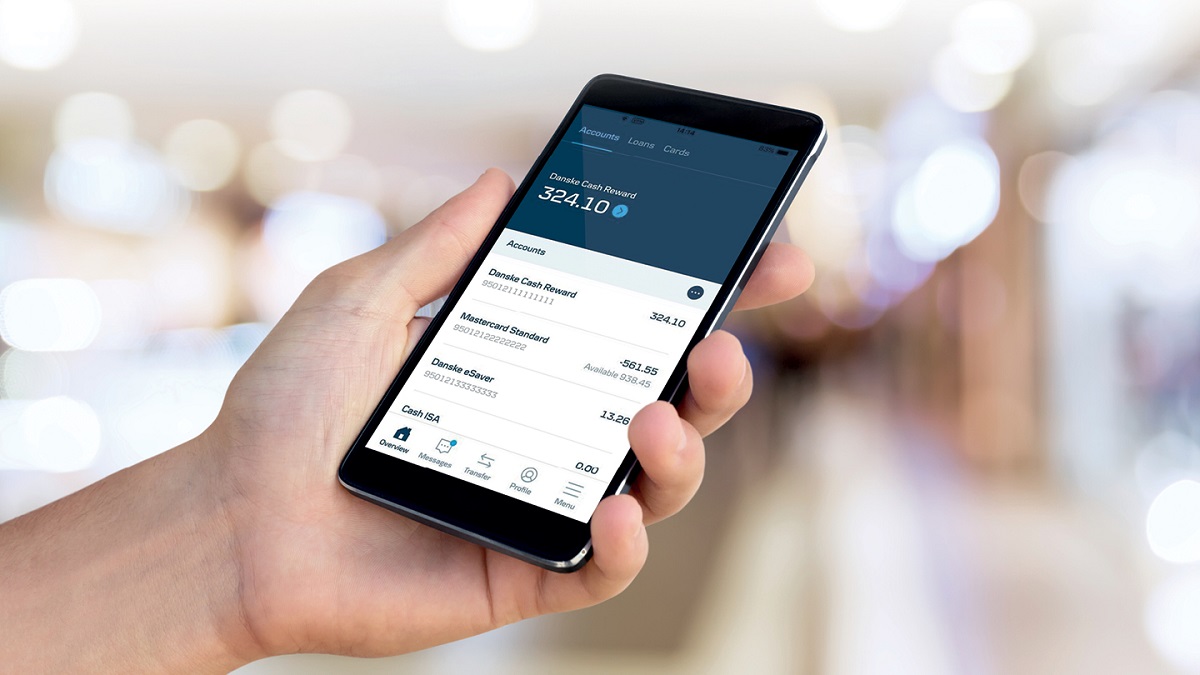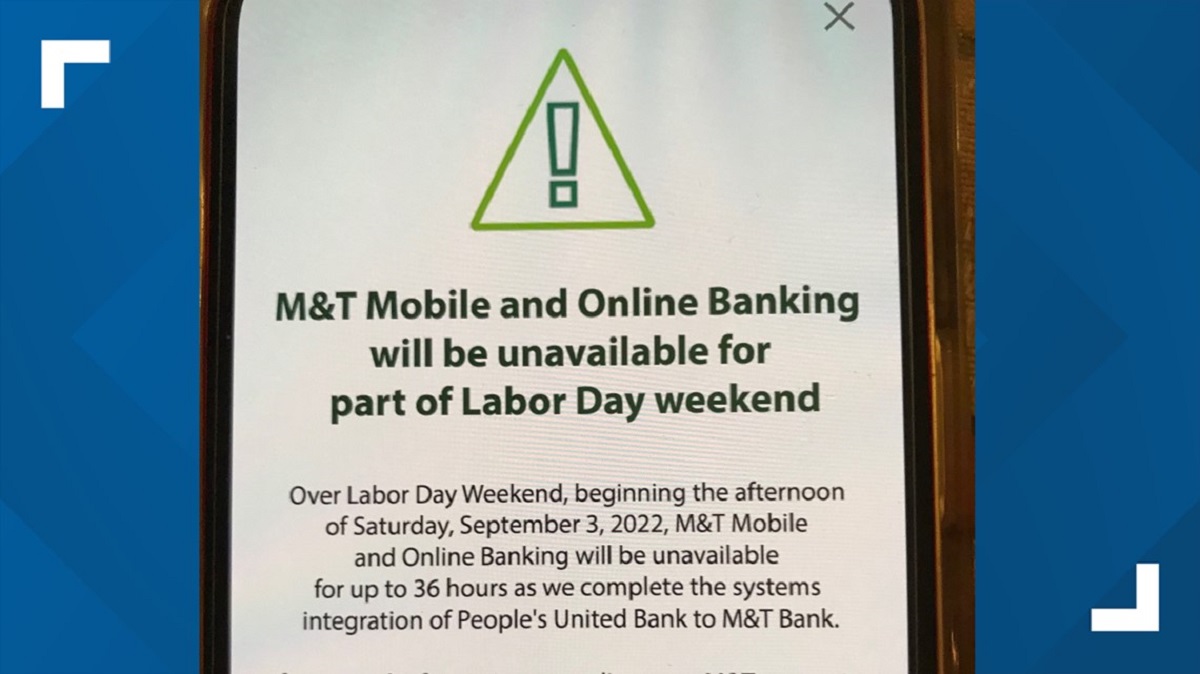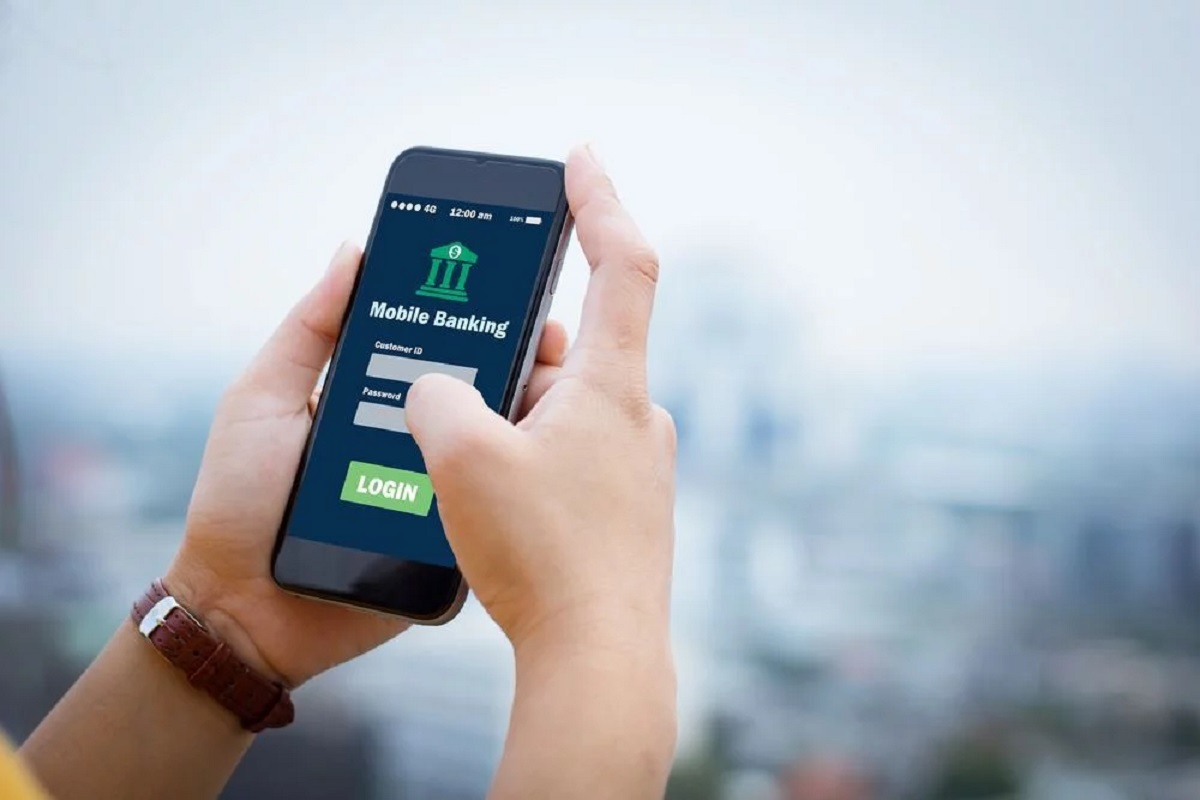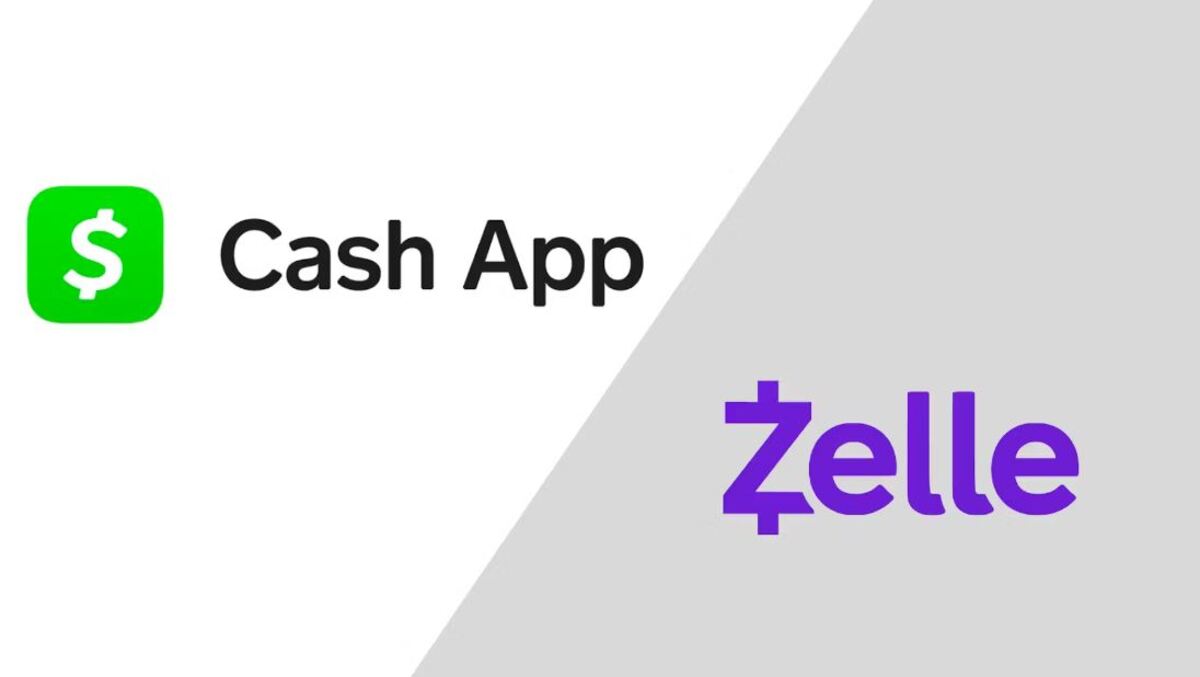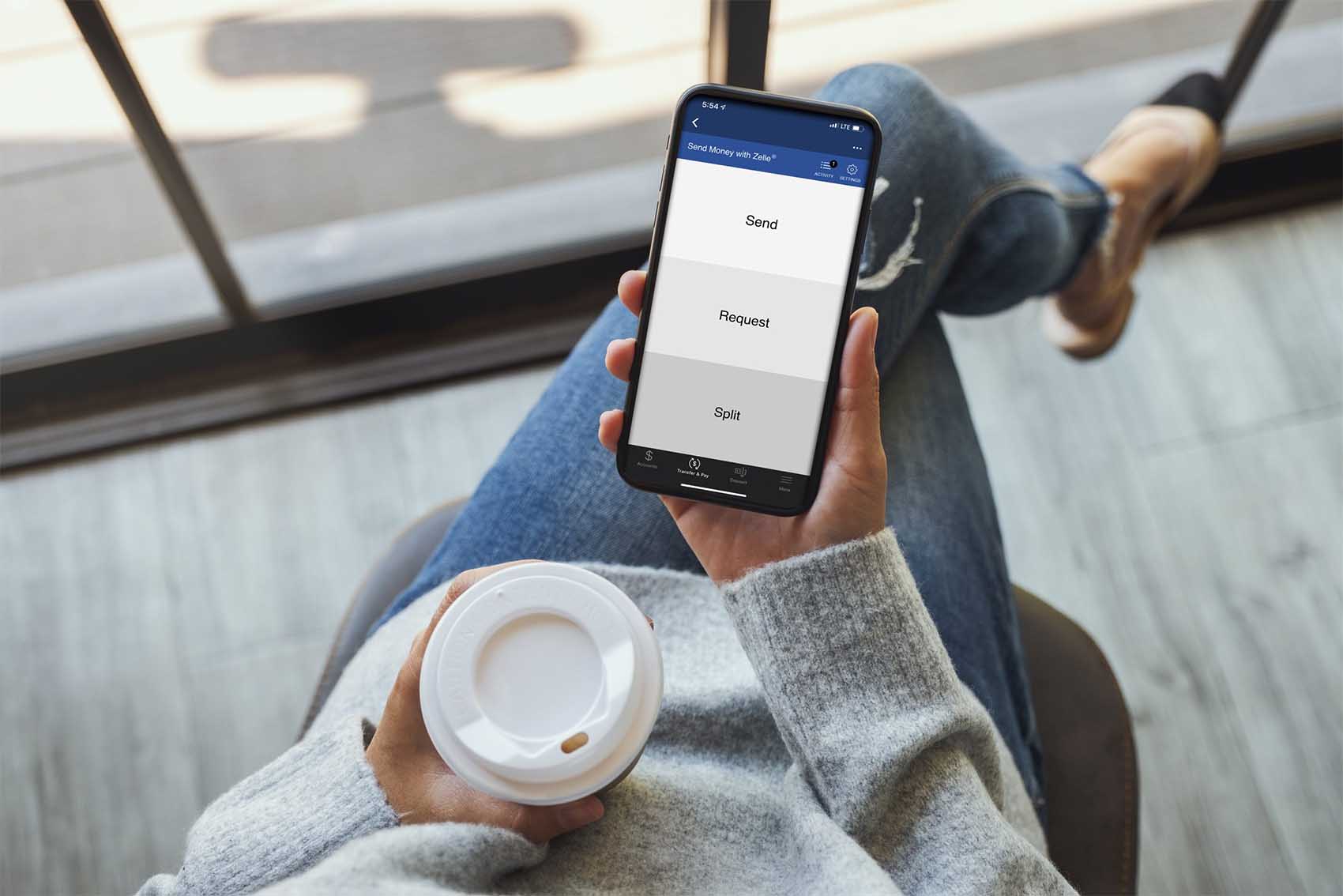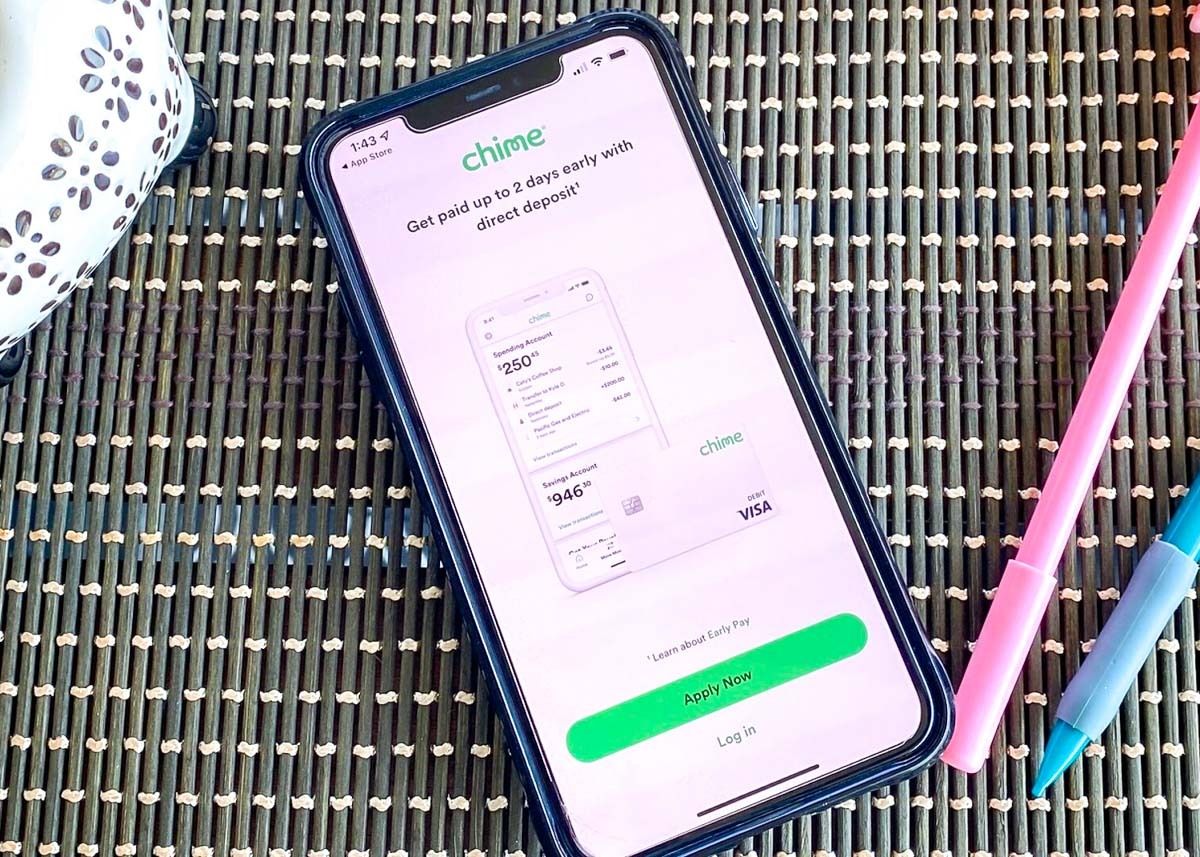Introduction
Welcome to the digital age, where almost everything can be done with just a touch of a button. One area that has seen a tremendous transformation is the banking sector, thanks to the advent of mobile banking apps. Gone are the days of standing in long queues at the bank or being tied to your computer for online banking. Mobile banking apps have revolutionized the way we manage our finances, providing convenience, accessibility, and security at our fingertips.
A mobile banking app is a software application that allows users to perform various financial transactions and manage their accounts using their mobile devices such as smartphones or tablets. These apps provide users with the flexibility to access their accounts anytime and anywhere, eliminating the need to visit physical branches or be tied to a computer.
With a mobile banking app, users can perform a wide range of tasks, including checking account balances, transferring funds between accounts, paying bills, depositing checks, and even applying for loans or credit cards. The convenience and ease of use offered by these apps have made them incredibly popular among individuals and businesses alike.
So, how exactly does a mobile banking app work? When you download and install a mobile banking app on your device, you’ll need to log in using your bank account credentials. Once logged in, the app establishes a secure connection with your bank’s servers, allowing you to access your account information and perform transactions. These apps use various security measures, such as encryption and biometric authentication, to ensure the safety of your personal and financial data.
Mobile banking apps offer numerous benefits that make them a preferred choice for banking. One of the key advantages is convenience. With a mobile banking app, you can conveniently manage your finances on the go, without the need to visit a physical branch. Whether you’re at home, at work, or on vacation, you have access to your accounts and can perform transactions with just a few taps.
What is a Mobile Banking App?
A mobile banking app is a software application specifically designed for smartphones or tablets that allows users to access and manage their bank accounts conveniently. It is a digital tool offered by banks and financial institutions to provide customers with enhanced banking services and access to their accounts on the go.
Mobile banking apps are typically available for download from app stores and require users to have an active account with the respective bank or financial institution. Once installed on the device, the app acts as a gateway to various banking services and features.
These apps enable users to perform a wide range of tasks, making banking more convenient and accessible. Some common features offered by mobile banking apps include:
- Account balance inquiries
- Fund transfers between accounts
- Bill payments
- Mobile check deposits
- Transaction history review
- Loan applications
- Card management (activating, blocking, or applying for new cards)
- Financial goal tracking and budgeting tools
- Alerts and notifications for account activities
Mobile banking apps have become an integral part of banking services due to their convenience and user-friendly interfaces. They are designed to provide intuitive navigation, making it easy for even non-technical users to navigate and access their accounts.
Furthermore, mobile banking apps often leverage the capabilities of smartphones and tablets to enhance the user experience. This includes features such as touch ID or face ID authentication for secure login, push notifications for real-time updates on account activities, and the ability to customize alerts and reminders.
It is important to note that mobile banking apps are not just limited to personal banking. Many financial institutions also offer dedicated mobile banking apps for business customers, providing them with specialized features such as bulk payments, payroll management, and transaction approvals.
Overall, mobile banking apps have revolutionized the way individuals and businesses interact with their banking institutions. They offer a convenient, secure, and on-the-go banking experience, empowering users to manage their finances efficiently and effectively.
How Does a Mobile Banking App Work?
Mobile banking apps work by utilizing the technology and connectivity of smartphones or tablets to enable users to access and manage their bank accounts remotely. These apps provide a secure and convenient way to perform various financial transactions and access banking services on the go.
Here is a simplified overview of how a mobile banking app typically works:
- Registration and Installation: To begin using a mobile banking app, users need to download and install it on their smartphones or tablets from the app store. Once installed, users will need to register and create an account using their existing bank account details.
- Login and Authentication: After installing the app, users can open it and log in using their credentials, such as username and password. Many mobile banking apps now also support biometric authentication methods, such as fingerprint scanning or facial recognition, for enhanced security and convenience.
- Secure Connection: Once logged in, the app establishes a secure connection with the bank’s servers using encryption protocols. This ensures that the data transmitted between the app and the bank’s servers remains private and protected from unauthorized access.
- Account Overview: Upon successful connection, users can view the dashboard or home screen of the app, which provides an overview of their account balances, recent transactions, and other relevant details. This allows users to have a quick glance at their financial status at a glance.
- Transaction and Banking Services: Mobile banking apps offer a wide array of banking services and transactions that users can perform. These include transferring funds between accounts, making bill payments, depositing checks using the device’s camera, applying for loans or credit cards, managing standing orders, and more.
- Notifications and Alerts: Mobile banking apps provide real-time alerts and notifications to keep users informed about important account activities. This can include account balance updates, transaction confirmations, payment reminders, and security alerts for suspicious activities.
- Security Measures: Mobile banking apps incorporate various security measures to safeguard user data and prevent unauthorized access. These measures may include encryption of data, multi-factor authentication, automatic session timeouts, and the ability to remotely disable the app in case of a lost or stolen device.
It’s important to note that each mobile banking app may have its own specific features and functionalities. Banks often continuously update and enhance their apps to provide users with more convenient and secure mobile banking experiences.
Overall, mobile banking apps streamline the banking process, allowing users to conveniently manage their finances wherever they are, making banking more accessible and efficient than ever before.
Benefits of Mobile Banking App
The rise of mobile banking apps has transformed the way we manage our finances, offering numerous benefits that make them a preferred choice for banking. Here are some of the key advantages of using a mobile banking app:
- Convenience: Perhaps one of the greatest benefits of mobile banking apps is the convenience they offer. With just a few taps on your smartphone or tablet, you can access your bank accounts, make transactions, and manage your finances anytime and anywhere. No longer do you need to visit a physical branch or be tied to your computer to perform banking tasks.
- Accessibility: Mobile banking apps provide unparalleled accessibility to your accounts. Whether you’re at home, at work, on vacation, or on the go, as long as you have your mobile device and an internet connection, you can easily check your account balances, transfer funds, pay bills, and more. This accessibility ensures that you have full control over your finances, no matter where you are.
- Time-Saving: By eliminating the need to visit a physical branch, mobile banking apps save you valuable time. You no longer have to wait in long queues or spend time traveling to the bank. With quick and easy access to your accounts, you can efficiently complete financial transactions in a matter of minutes.
- Real-Time Updates: Mobile banking apps provide real-time updates on your account activities. You can receive notifications for deposits, withdrawals, purchases, bill payments, and more. This real-time information allows you to stay informed about the financial transactions happening in your accounts, helping you better manage your money.
- Enhanced Security: Mobile banking apps employ advanced security measures to protect your financial data. These measures may include encryption, secure login methods such as biometric authentication, transaction verification, and options to remotely disable the app if your device gets lost or stolen. With these security features, mobile banking apps ensure the confidentiality and integrity of your personal and financial information.
- Financial Management Tools: Many mobile banking apps provide additional features to help you manage your finances effectively. These tools can include budgeting trackers, spending analyses, and goal-setting capabilities. Having these tools at your fingertips enables you to gain better control over your finances and work towards your financial goals.
- 24/7 Customer Support: Mobile banking apps often come with dedicated customer support channels, allowing you to seek assistance whenever you need it. Whether you have a query, need help with a transaction, or want to report a suspicious activity, you can easily reach out to customer support directly through the app.
These benefits make mobile banking apps a valuable tool for individuals and businesses alike. As technology continues to advance, mobile banking apps will undoubtedly evolve to offer even more features and benefits, making financial management more seamless and convenient for users.
Security Measures in Mobile Banking App
Ensuring the security of user data and transactions is paramount for mobile banking apps. To instill trust and protect sensitive information, these apps employ robust security measures. Here are some common security features found in mobile banking apps:
- Encryption: Mobile banking apps use encryption techniques to protect the confidentiality of data transmitted between the app and the bank’s servers. Encryption scrambles the data, making it unreadable to unauthorized parties.
- Secure Login: Mobile banking apps often require users to set up strong and unique passwords for account access. Additionally, many apps support biometric authentication methods, such as fingerprint scanning or facial recognition, to enhance login security and prevent unauthorized access.
- Two-Factor Authentication (2FA): Some mobile banking apps offer the option for users to enable two-factor authentication. This adds an extra layer of security by requiring a second form of verification, such as a unique code sent to the user’s registered mobile number, before logging in or approving transactions.
- Transaction Verification: Mobile banking apps may utilize transaction verification methods, such as One-Time Passwords (OTPs) or push notifications, to confirm the authenticity of transactions. These verification steps help prevent unauthorized transactions and provide an additional layer of security.
- Device Recognition: To enhance security, mobile banking apps often incorporate device recognition features. This involves logging in or authorizing transactions only from recognized devices that have been previously registered with the app.
- Automatic Logout: Mobile banking apps implement automatic logout timers to prevent unauthorized access when the app is left unattended. This feature helps safeguard user accounts in case the device is lost or stolen.
- Remote Device Disablement: In the event of a lost or stolen device, many mobile banking apps allow users to remotely disable the app from another device or through online banking. This prevents unauthorized access to the user’s account and ensures the security of their financial information.
- Multi-Layered Firewalls: Banking apps employ robust firewalls to protect against unauthorized access and external threats. These firewalls act as barriers that monitor and filter incoming and outgoing network traffic to detect and block potential security breaches.
- Security Audits and Updates: Banks regularly conduct security audits to identify vulnerabilities and enhance the security of their mobile banking apps. App updates are also released to address any discovered security issues and provide users with the latest protection.
It is crucial for users to play an active role in maintaining the security of their mobile banking apps. This includes regularly updating the app to the latest version, using strong and unique passwords, and being cautious of phishing attempts or suspicious links and attachments.
By implementing these robust security measures, mobile banking apps strive to provide users with a secure and reliable platform for managing their finances on the go.
Features of Mobile Banking App
Mobile banking apps offer a wide range of features that empower users to conveniently manage their finances and access banking services on the go. Here are some common features found in mobile banking apps:
- Account Balance Inquiry: With a few taps, users can easily check their account balances, view transaction history, and monitor their overall financial standing.
- Fund Transfers: Mobile banking apps enable users to transfer funds between their own accounts or to other accounts within the same bank, providing a convenient way to handle payments and manage personal finances.
- Bill Payments: Users can pay their bills directly from their mobile banking app, eliminating the need for paper checks or physical visits to payment centers. This feature often includes recurring payment options and the ability to set up reminders.
- Mobile Check Deposit: Many mobile banking apps now offer the functionality to deposit checks by simply taking a photo of the front and back of the check. This saves users time and effort, as they can deposit checks without visiting a physical branch or ATM.
- Card Management: Users can manage their debit or credit cards within the app. This includes activating new cards, reporting lost or stolen cards, setting spending limits, and receiving transaction alerts to monitor card activity.
- Loan Applications: Mobile banking apps often provide the option to apply for loans or credit cards directly from the app. Users can complete and submit applications, track their loan status, and receive notifications on approval or rejection.
- Financial Goal Tracking: Some mobile banking apps offer tools to set financial goals and track progress. Users can set savings targets, monitor spending habits, and receive insights and recommendations to achieve their financial objectives.
- Account Alerts and Notifications: Mobile banking apps send real-time alerts and push notifications to keep users informed about their account activities. These can include low balance alerts, transaction confirmations, payment reminders, or security alerts for suspicious activities.
- Timeline and Categorization: Mobile banking apps often categorize transactions and provide a timeline of spending patterns, enabling users to understand their financial habits and make informed decisions.
- Customer Support: Many mobile banking apps have integrated customer support functionalities. Users can access support through chat, email, or phone directly from the app, allowing for quick resolution of concerns or queries.
It’s important to note that not all mobile banking apps offer the same set of features, as they can vary based on the bank or financial institution. Additionally, apps constantly evolve and may introduce new features to enhance the user experience and meet customer demands.
The features provided by mobile banking apps enable users to easily manage their finances, make transactions, and access banking services with just a few taps on their smartphones or tablets. These features offer convenience, flexibility, and control in the palm of your hand.
Popular Mobile Banking Apps
The rise of mobile banking has led to the development of numerous mobile banking apps offered by different banks and financial institutions. Here are some popular mobile banking apps:
- Chase Mobile: Chase Mobile is the mobile banking app offered by JPMorgan Chase, one of the largest banks in the United States. The app provides users with a range of features, including fund transfers, bill payments, mobile check deposits, and personalized insights into spending habits.
- Bank of America Mobile Banking: Bank of America’s mobile banking app offers users the ability to manage their accounts, transfer funds, pay bills, view statements, and set up custom alerts. The app also provides security features such as fingerprint and face ID login.
- Wells Fargo Mobile: Wells Fargo’s mobile banking app allows users to access their accounts, deposit checks, make fund transfers, and pay bills. Users can also view account balances, monitor transactions, and receive real-time alerts to stay updated on their financial activities.
- Citibank: Citibank’s mobile banking app provides users with a variety of features, including account management, money transfers, bill payments, and card management. The app also offers spending insights, allowing users to categorize transactions and set budgeting goals.
- Ally Mobile: Ally Mobile is the mobile banking app offered by Ally Bank. It allows users to access their accounts, make transfers, pay bills, deposit checks, and view transaction history. The app also provides a savings tool called “Surprise Savings,” which helps users automatically save money.
- Capital One Mobile: Capital One Mobile banking app offers users the ability to manage their accounts, pay bills, deposit checks, and view transaction history. The app also provides features like transaction notifications, credit score tracking, and personalized spending insights.
- USAA Mobile: USAA Mobile is designed for members of the United Services Automobile Association (USAA). The app offers comprehensive banking services, insurance coverage, investment management, and even vehicle loans. With USAA Mobile, members can access all their financial needs in one place.
- HSBC Mobile Banking: HSBC Mobile Banking provides users with convenient access to their HSBC accounts. The app allows users to view balances, make transfers, pay bills, find ATM locations, and even apply for HSBC products from their mobile devices.
- Barclays Mobile Banking: Barclays Mobile Banking app offers users the flexibility to manage their accounts, transfer funds, pay bills, and access features such as Barclays Pingit for peer-to-peer payments. The app also provides personalized insights and tools to help users manage their finances effectively.
- PNC Mobile Banking: PNC Mobile Banking app offers a range of features, including account management, quick access to balances and transactions, bill payments, and fund transfers. Users can also find PNC ATMs and branches using the app’s location services.
These are just a few examples of popular mobile banking apps available in the market. It’s important to note that the availability and features of banking apps may vary depending on the country and the financial institution.
When choosing a mobile banking app, it’s essential to consider factors such as the app’s user interface, security measures, features offered, and compatibility with your banking needs. It’s recommended to research and review the app’s ratings and user feedback before making a decision.
As technology continues to advance, mobile banking apps are expected to evolve further, offering even more features and enhanced user experiences to meet the evolving needs of customers.
Tips for Using Mobile Banking App Safely
While mobile banking apps provide convenience and accessibility, it’s important to take necessary precautions to ensure the safety and security of your financial information. Here are some tips to help you use mobile banking apps safely:
- Download from Trusted Sources: Only download mobile banking apps from official app stores, such as Google Play Store or Apple App Store. Avoid downloading apps from third-party sources, as they may be malicious.
- Secure your Device: Use a strong passcode or biometric authentication (e.g., fingerprint or face ID) to secure your device. This adds an extra layer of protection in case your device falls into the wrong hands.
- Keep your App Updated: Regularly update your mobile banking app to the latest version. App updates often include security patches and enhancements that protect against potential vulnerabilities.
- Use Strong and Unique Passwords: Create strong passwords for your mobile banking app and avoid using the same password for multiple accounts. Consider using a password manager to securely generate and store your passwords.
- Be Cautious of Phishing Attempts: Be wary of emails, text messages, or phone calls asking for your personal or financial information. Legitimate banks and financial institutions will never ask for sensitive information through these channels.
- Enable Two-Factor Authentication: Whenever possible, enable two-factor authentication for your mobile banking app. This adds an extra layer of security by requiring a verification code or biometric authentication in addition to your password.
- Monitor Account Activity: Regularly review your account activity and transaction history to detect any unauthorized or suspicious transactions. If you notice any irregularities, report them to your bank immediately.
- Avoid Public Wi-Fi: Use a secure and private internet connection when accessing your mobile banking app. Public Wi-Fi networks may not be secure, making it easier for hackers to intercept your data.
- Keep your App Locked: Enable screen lock on your mobile banking app, requiring a password, PIN, or biometric authentication each time you open the app. This adds an extra layer of protection if your device is lost or stolen.
- Be Mindful of Phishing Links: When accessing your mobile banking app, always type the official URL directly into your browser or use a trusted bookmark. Avoid clicking on links from emails or text messages, as these may lead to fake websites designed to steal your information.
By following these tips, you can enhance the security of your mobile banking app and protect your financial information from unauthorized access or fraud. It’s also important to stay updated with the latest security practices and guidelines provided by your bank or financial institution to ensure a safe mobile banking experience.
Conclusion
Mobile banking apps have revolutionized the way we manage our finances, offering convenience, accessibility, and security at our fingertips. With just a few taps on our smartphones or tablets, we can access our accounts, make transactions, and utilize various banking services anywhere and anytime.
These apps provide a wide range of features, including balance inquiries, fund transfers, bill payments, mobile check deposits, card management, and much more. They empower users to take control of their finances and seamlessly handle their banking needs on the go.
Moreover, mobile banking apps prioritize the security of user data and transactions. They employ encryption, secure login methods, two-factor authentication, and other security measures to safeguard personal and financial information from unauthorized access. Regular app updates and security audits further enhance the protection of user data.
While enjoying the benefits of mobile banking apps, it’s essential to use them safely and responsibly. Users should download apps from trusted sources, use strong and unique passwords, enable two-factor authentication, and be cautious of phishing attempts. Regularly monitoring account activity and avoiding public Wi-Fi are also recommended precautions.
As technology continues to advance, we can expect mobile banking apps to evolve further, offering even more features and an improved user experience. It’s important for users to stay informed about the security practices and guidelines provided by their bank or financial institution.
In conclusion, mobile banking apps have transformed the way we bank, making financial management more convenient, accessible, and secure. By leveraging these apps responsibly, we can effectively manage our finances in the digital age and experience the benefits they offer.







